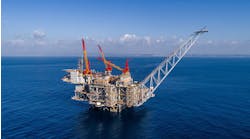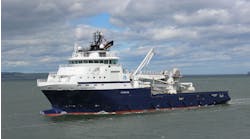Production in the UK sector of the North Sea has leveled after a 15-year slide. The other primary offshore producing nation in the region - Norway - has posted production increases for the past two consecutive years (2014 and 2015). New projects under development should help sustain this trend in both provinces for the next few years. But the lack of exploration wells, in the UKCS in particular, is forcing regional players and regulators to come up with new ideas to stimulate activity.
The Oil & Gas Authority (OGA) was established in 2015 with a remit, in part, to renew exploration in the UKCS, which has fallen to its lowest level since the 1970s. OGA believes that there are under-explored areas in the region that may hold substantial resources.
Seismic acquisition surveys were launched last year to assess the potential of these areas. The first program focused on the Rockall Trough and Mid-North Sea High areas. OGA intends to make these areas available in the 29th Offshore Licensing Round that launched on July 27. Companies have until Oct. 26 to apply for blocks.
A second survey is expected to collect between 10,000 and 15,000 km (6,214-9,320 mi) of 2D seismic data of the East Shetland Platform and South West Britain areas. Acquisition data will be released ahead of the 31st Offshore Licensing Round in 2018.
OGA also is working on a new solution to reduce well construction costs that, if adopted, could enable an estimated 40 additional new wells per year to go forward and support the unlocking of 5 Bboe of reserves, it claims. Seeherefor more on OGA’s plans to help reverse the slide in UK offshore exploration.
Meanwhile, the authority is proceeding with a plan to increase the volume of recovery from existing fields in the UKCS with EOR technology. In a report released last month, OGA outlined a plan to facilitate the sanctioning of EOR projects to deliver up to 250 MMboe of additional reserves by 2021. The program aims to advance the economic feasibility of deploying chemical EOR (polymer and surfactant); low-salinity water flooding; and miscible gas injection (hydrocarbon or CO2) in the UKCS. OGA believes that polymer EOR presents the greatest opportunity.
Currently, there are five field developments in the UKCS that include plans to deploy EOR, but only one, the Magnus hydrocarbon miscible gas injection project, is operational.
Another example of late-life field extension in the UKCS is Repsol Sinopec Resources UK’s Montrose Area Redevelopment. The renovation program calls for the extension of one of Britain’s longest serving platforms for a sixth decade of service. The program is designed to recover an extra 100 MMboe from the area, extending the lives of facilities that would otherwise face decommissioning, writes Jeremy Beckman, Offshore Editor-Europe. See Beckman’s full report beginninghere.
Offshore Norway, drilling continues at a healthy pace and projects are moving ahead. One of the most active participants in recent years has been Faroe Petroleum. The operator has gained interests in 35 Norwegian licenses and recently discovered Brasse offshore Norway, the largest new oil find this year as of press time. Jeremy Beckman spoke with Faroe Petroelum COO Helge Hammer to learn more about the company’s strategic objectives. Beckman’s interview beginshere.
In the Norwegian sector of the Barents Sea, recent exploration success is expected to lead to a new investment cycle, Rystad Energy predicts. With production ramping up at Goliat and future startups at Castberg, Wisting, and Alta/Gohta, the Barents Sea could contribute up to 15% of the total Norwegian production by the end of the next decade. Rystad Energy’s Barents Sea outlook beginshere.
To respond to articles in Offshore, or to offer articles for publication, contact the editor by email([email protected]).




